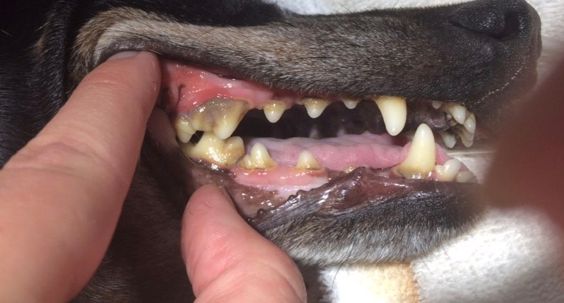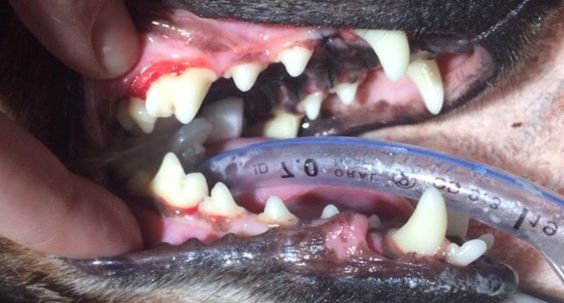Dentals
Dentals

Before dental cleaning.
The brown on the teeth is plaque and tartar build up. Excessive plaque and tartar can lead to gum recession, infection, and decay of teeth.

After dental cleaning.
Teeth are free of plaque and tartar, the mouth is healthy, and the cleaning was done early enough no teeth extractions were needed.
Please set up an appointment today if you’re concerned about your pet’s oral health so we can work together to help keep your pet and their mouth healthy.
Just like in people, routine dental care is important not only for health of the teeth and oral cavity, but for overall health of your pet. Dental disease can cause pain, inability to eat, and behavioral changes in your pet. Common signs that dental care is needed include bad breath, consistent drooling, brown or yellow build-up on the teeth, broken teeth, and red and/or bleeding gums. Cats may get red lesions not only on their gums, but also in other locations in the mouth. Diseased teeth can be a serious source of pain and discomfort.
The best way to prevent dental disease is to allow your veterinarian to assess your pet’s teeth yearly. At your pet’s annual exam your veterinarian can tell you if, or when, your pet needs a routine dental cleaning (see more info below). It is important to note that small dogs often need dental cleanings yearly. If cleanings are not done routinely your pet may develop diseased teeth that need to be extracted to prevent further pain and discomfort.
Our veterinarians love preventative medicine and would be happy to discuss ways to keep your pets mouth healthy throughout their life.

